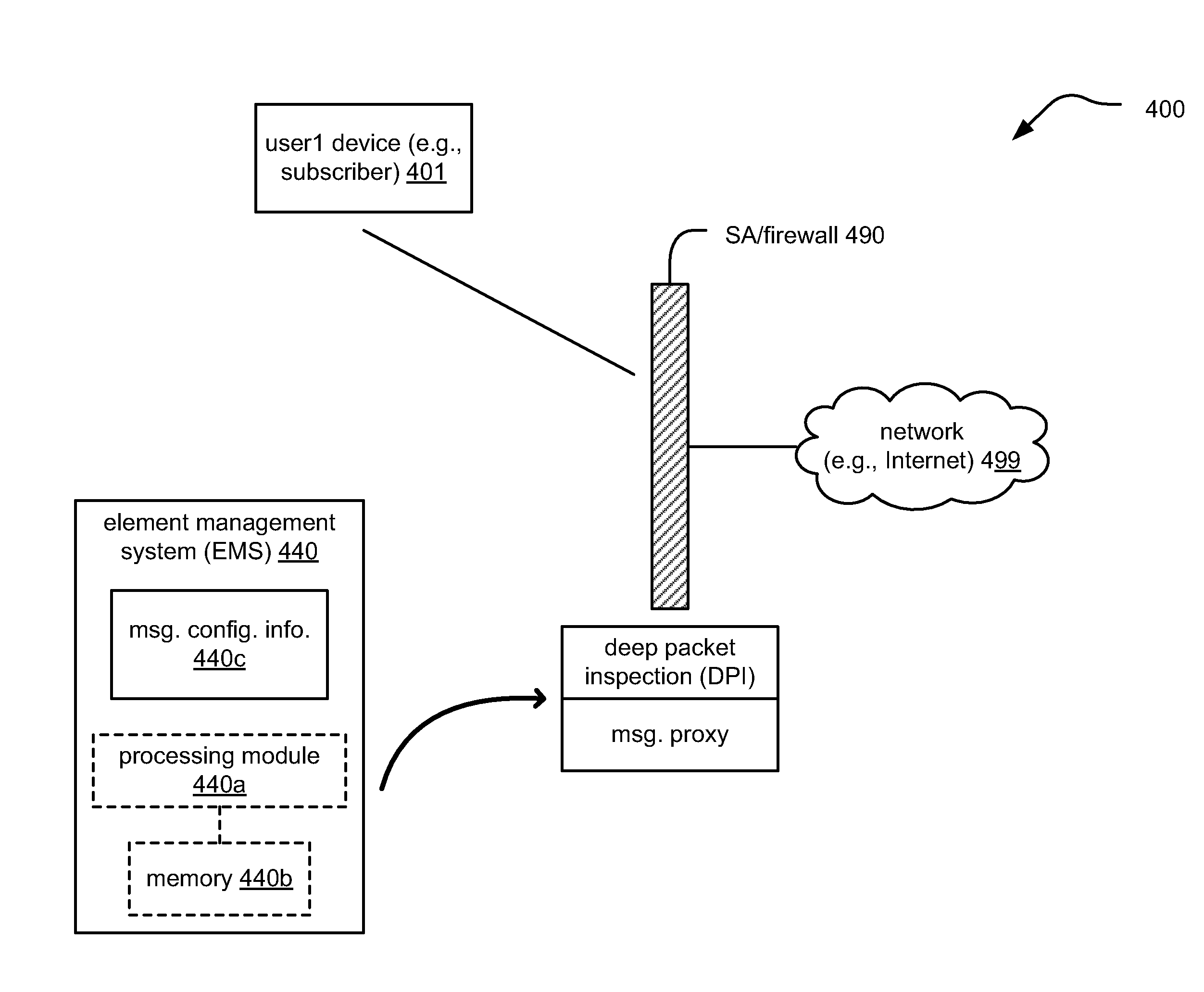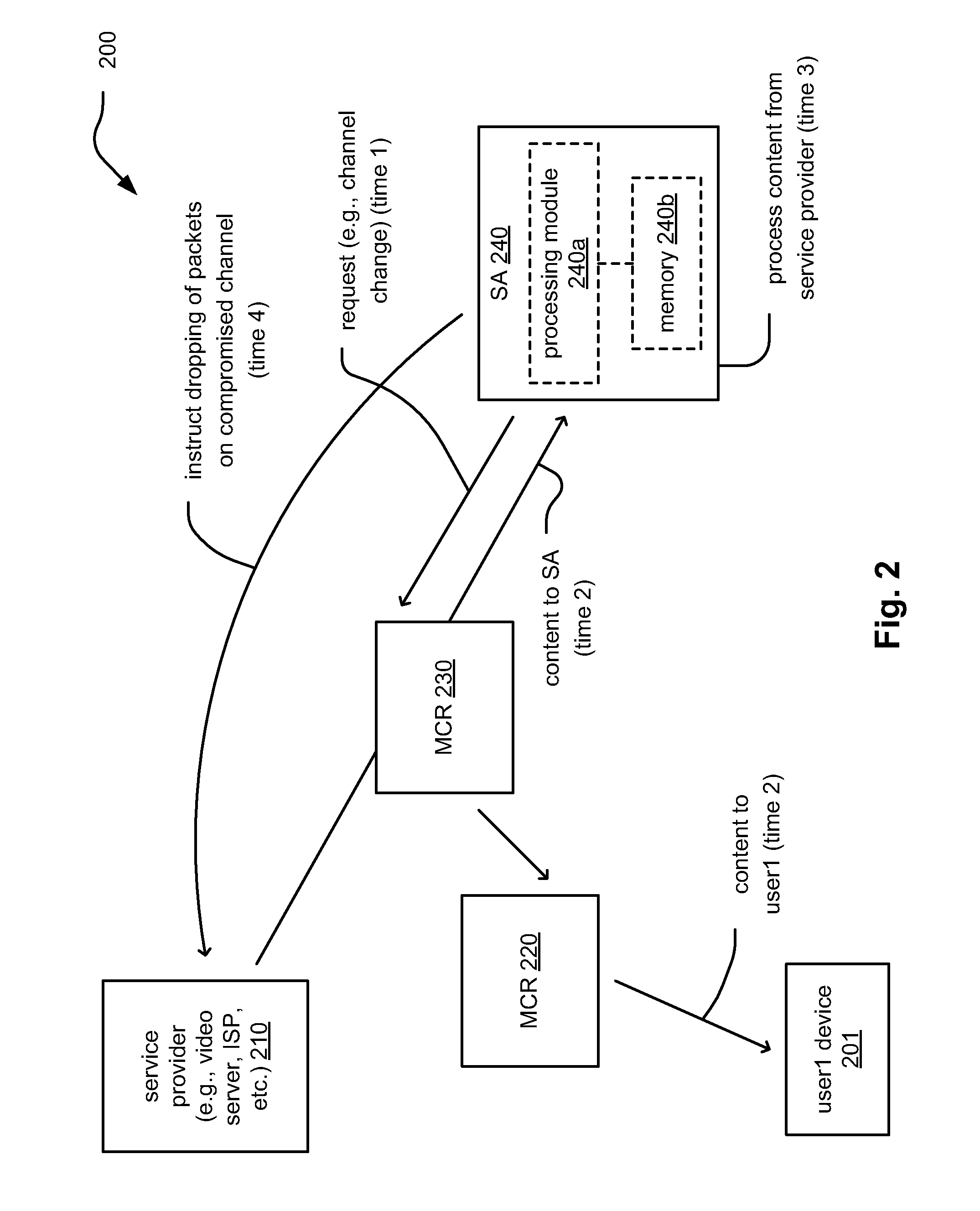MECHANISM FOR IDENTIFYING MALICIOUS CONTENT, DoS ATTACKS, AND ILLEGAL IPTV SERVICES
a malicious content and detection method technology, applied in the field of network security, can solve the problems of not operating pro-actively to enable protection for internal/inside attack events such as denial of service (dos) attacks and illegal iptv services
- Summary
- Abstract
- Description
- Claims
- Application Information
AI Technical Summary
Benefits of technology
Problems solved by technology
Method used
Image
Examples
embodiment 100
[0023]FIG. 1 is a diagram illustrating an embodiment 100 of a network that services Internet protocol television (IPTV) content. There are a variety of types of attacks that may be made to such a network. For example, denial of service (DoS) attacks may be made as fuzzed and / or replayed control messages (e.g., of any type of control message including IGMP, CMS, etc.) in which a high number of control messages are flooded to a residential gateway (through which the IPTV services flow). Such DoS attacks have a direct impact on the performance of the overall content view ability, the ability of a user to effectuate channel changes, etc.
[0024]As can be seen in this diagram, a security appliance (SA) 140, which may include a processing module 140a and a memory 140b, is implemented to enable protection from inside / internal attacks. In contrast to an IPS, which operates to ensure a perimeter of defense around a network to stem attacks originating from an external network (e.g., the Interne...
embodiment 200
[0045]In this embodiment 200, an SA 240 (that also may include a processing module 240a and a memory 240b) monitors one or more sessions of IPTV provided to one or more users. The SA 240 itself may receive a multicast signal that includes the IPTV streams as well, so that it can directly perform monitoring of the IPTV streams without needing copies thereof to be send separately from another device within a network (i.e., by receiving the IPTV stream(s) of interest, the SA 240 ca perform monitoring and analysis thereof directly). As one example, if and when a particular IPTV stream (such a particular channel) is identified as possibly including malicious content, then the SA 240 would then send a control message to select that particular IPTV stream (or channel).
[0046]Moreover, the SA 240 may independently probe and monitor one or more various IPTV streams without needing to identify any such IPTV stream as possibly including malicious content. In other words, the SA 240 may probe an...
embodiment 300
[0048]FIG. 3 is a diagram illustrating an alternative embodiment 300 of a network that services IPTV content and includes protection from internal attacks. A device or application running an IPS (e.g., such as SA 340, which could include a processing module 340a and a memory 340b therein) can poll the various multicast IPTV streams provided via various content providers (e.g., servers, router 310, IGMP proxy devices, IGMP snooping devices, etc.). For example, the user1 device 301 would be included within a legitimate multicast group receiving IPTV content through MCR 320, as shown by time 1.
[0049]The SA 340 can then list all users subscribed to each of the various multicast groups. As shown by time 2, a list of the various groups within the network is then compared to the content being provided from the service provider (e.g., via router 310), via an external network 399 (such as the Internet), or via some other triple-play domain and / or network such as may be separated from the int...
PUM
 Login to View More
Login to View More Abstract
Description
Claims
Application Information
 Login to View More
Login to View More - R&D
- Intellectual Property
- Life Sciences
- Materials
- Tech Scout
- Unparalleled Data Quality
- Higher Quality Content
- 60% Fewer Hallucinations
Browse by: Latest US Patents, China's latest patents, Technical Efficacy Thesaurus, Application Domain, Technology Topic, Popular Technical Reports.
© 2025 PatSnap. All rights reserved.Legal|Privacy policy|Modern Slavery Act Transparency Statement|Sitemap|About US| Contact US: help@patsnap.com



